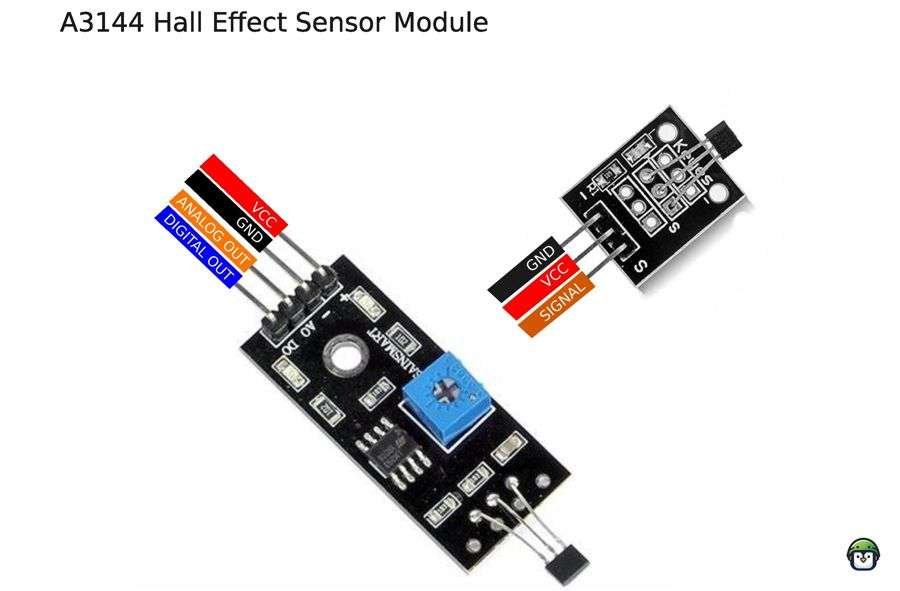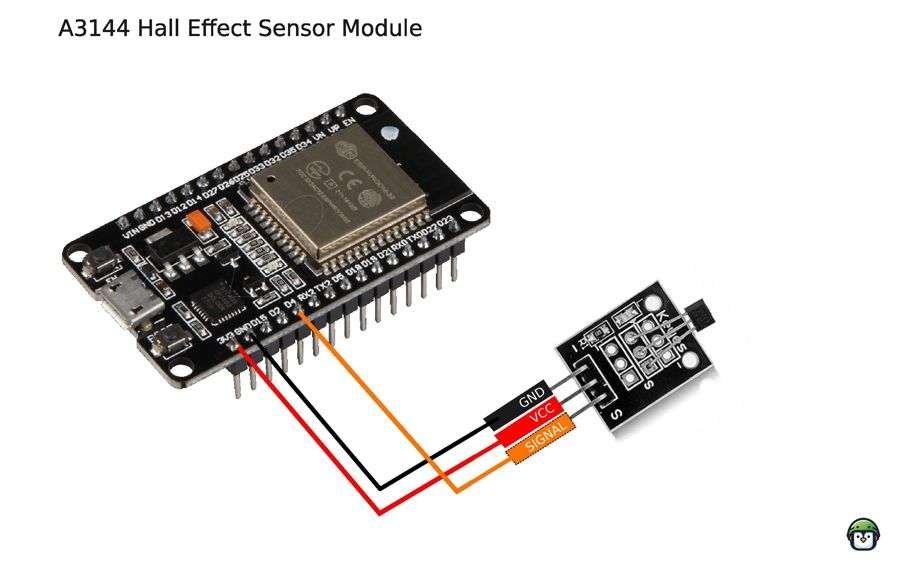Magnetic field detection is a fascinating application of modern technology, offering a range of possibilities in industries like automotive, robotics, and renewable energy. With the advent of microcontrollers like the ESP32, building a magnetic field detection system with Hall effect sensor for ESP32 has never been easier or more accessible. By integrating Hall effect sensor for ESP32, you can measure magnetic fields accurately and use the data for various practical applications. In this article, we’ll explore how to set up and use Hall effect sensor for ESP32, complete with wiring diagrams, code examples, and real-world use cases.
The Hall effect sensor is a compact, affordable device that generates a voltage when exposed to a magnetic field. By connecting it to the ESP32, you can read this voltage, interpret the magnetic field’s intensity, and use the information in projects like motor position monitoring, magnetic switches, or even compass systems.
Table of Contents
How Hall Effect Sensor for ESP32 Works

The Hall effect sensor operates based on the Hall effect principle, where a voltage difference is produced across an electrical conductor when it is exposed to a magnetic field. This voltage is proportional to the strength of the magnetic field, enabling precise measurements. Hall effect sensors are commonly used in applications like current sensing, position detection, and speed monitoring. By pairing Hall effect sensor for ESP32, you gain the ability to process this data for a wide range of custom applications.
Related:
Materials Needed
To follow along, you will need:
- An ESP32 development board
- A Hall effect sensor (e.g., A3144 or similar)
- Jumper wires
- A breadboard
- A power source (USB cable or battery pack)
Wiring Hall Effect Sensor for ESP32

The typical Hall effect sensor has three pins: VCC (power), GND (ground), and OUT (signal output). Here’s how to connect Hall effect sensor for ESP32:
- Connect the VCC pin of the Hall effect sensor to the 3.3V pin of the ESP32.
- Connect the GND pin of the sensor to a GND pin on the ESP32.
- Connect the OUT pin of the sensor to one of the ESP32’s GPIO pins (e.g., GPIO 4).
Ensure the connections are secure, as loose connections may cause inconsistent readings.
Coding ESP32 for Magnetic Field Detection with Hall Effect Sensor
Below is an example of a MicroPython script to read data from Hall effect sensor for ESP32:
from machine import Pin, ADC
import time
# Initialize the Hall effect sensor
hall_sensor = ADC(Pin(34)) # Replace 34 with your GPIO pin
hall_sensor.atten(ADC.ATTN_11DB) # Set the range to 0-3.3V
while True:
magnetic_field = hall_sensor.read() # Read sensor value
print("Magnetic field strength:", magnetic_field)
time.sleep(0.5) # Delay for readabilityApplications of Hall Effect Sensor for ESP32 Projects
- Magnetic Switches: Use Hall effect sensor for ESP32 to detect the opening or closing of doors and windows by sensing the proximity of a magnet.
- Motor Position Monitoring: Measure the position of a motor shaft by detecting the magnetic field generated by magnets on the shaft.
- Compass Systems: Combine magnetic field readings from Hall effect sensor for ESP32 setup with an algorithm to determine direction in navigation systems.
- Current Sensing: Measure electrical current in wires by detecting the magnetic field produced by the current flow.
Conclusion
Integrating Hall effect sensor for ESP32 is a powerful way to measure magnetic fields for various practical applications. This combination offers an affordable and versatile solution for projects that require precise magnetic field detection, such as in robotics, automotive systems, and home automation. By following this guide, you’ve learned how to set up Hall effect sensor for ESP32, wire it, and write code to read magnetic field data. The possibilities are endless—start experimenting today!
Leave a Reply